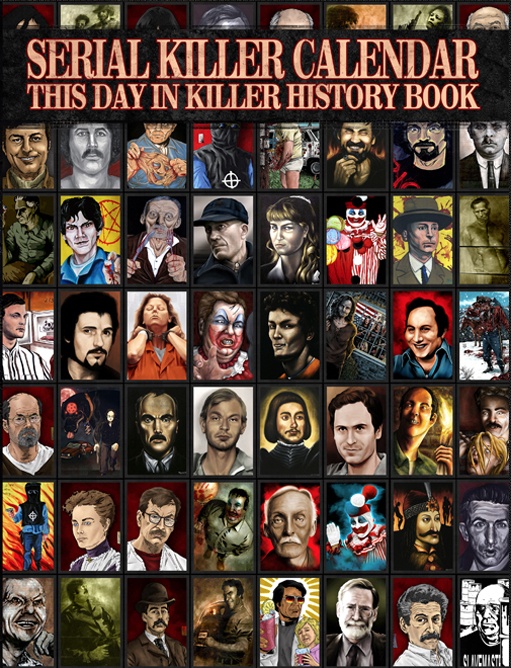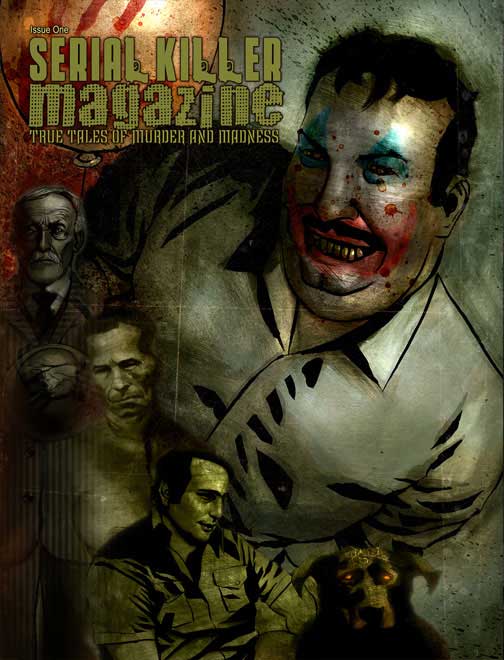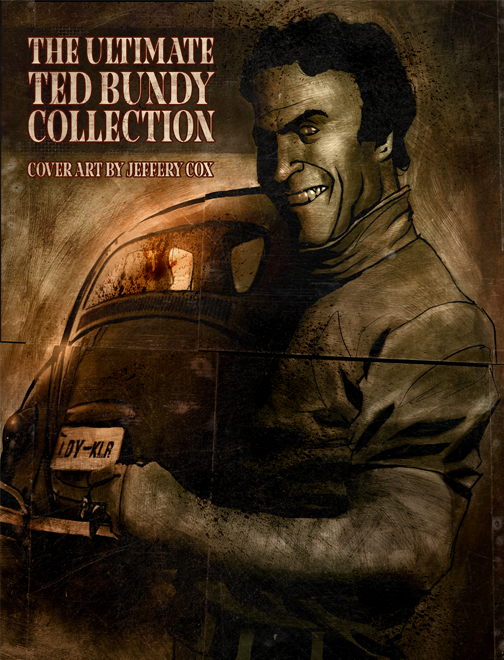ASSASSINATION
Assassination is the murder of an individual; usually a political or famous figure. An added distinction between assassination and other forms of killing is that an assassin usually has an ideological or political motivation, though many assassins (especially those who are not part of an organised movement) also show elements of insanity. Other motivations may be money (as in the case of a contract killing), revenge, or as a military operation.
The euphemism targeted killing (also called extrajudicial execution) is also sometimes used for sanctioned assassinations of opponents, especially where undertaken by governments. 'Assassination' itself, along with terms such as 'terrorist' and 'freedom fighter', may in this context be considered a loaded term, as it implies a despicable act - whereas the proponents of such killings may consider them justified or even necessary.
Etymology
The term 'Assassin' is generally assumed to be derived from its connections to the Hashshashin, a militant religious sect of Ismaili Muslims, thought to be active in the Middle East in the 8th to 14th centuries. This mystic secret society killed members of the Abbasid elite for political or religious reasons.
Stories tell us that these early assassins were drugged during their murders, often with materials such as hashish and opium. The name assassin is derived from either hasishin for the supposed influence of the drugs, and disregard for their own lives in the process, or hassansin for their leader, Hassan-i-Sabah.
Today it is known that hashishinnya was an offensive term used to depict this cult by its Muslim and Mongolian detractors; the extreme zeal and cold preparation to murder makes it unlikely they ever used drugs.
The earliest known use of the derived term "Assassination" is found in William Shakespeare's theatrical play Macbeth, first published in the year 1605.
Definition problem
The formal definition of the term 'Assassination' varies between sources. For example, according to The American Heritage Dictionary, to assassinate is:
"...to murder (a prominent person) by surprise attack, as for political reasons."
However, the Oxford English Dictionary defines assassination as:
"The action of assassinating; the taking the life of any one by treacherous violence, esp. by a hired emissary, or one who has taken upon him to execute the deed."
There is also the problem regarding motivation: should the term include killings where the primary motivation is to attract attention to a cause, took place for purely personal reasons with the target itself being of secondary importance, or should the use of this term be restricted to murders where the victim is a political leader or public figure hostile to the agenda of the killer?
One can take one of four positions on this definitional problem. (note that this consideration is of necessity based upon language, not law):
* that the killing of someone by treacherous violence should be considered an assassination,
* that the killing of someone only for political, moral, or ideological reasons constitutes an assassination,
* that the killing of someone serving in politics or public office counts,
* or that anyone with a significant level of political involvement would be an assassination victim in the event of their murder
For the purposes of this article, the second, most conservative definition predominates, even though it is likely that either the first or the third are the most popular. The fourth is generally considered to be too general in application.
Ancient history
Assassination is one of the oldest tools of power politics, dating back at least as far as recorded history. Philip II of Macedon, the father of Alexander the Great, and Julius Caesar can be noted as famous examples. Emperors of Rome often met their end in this way, as did many of the Shia Imams. The practice was also well-known in ancient China like Jing Ke's failed assassination of Qin Shi Huang. The ancient Indian military advisor Chanakya wrote about assassinations in detail in his political treatise Arthashastra.
In the Middle Ages, regicide was rare, but with the Renaissance, tyrannicide - or assassination for personal or political reasons - became more common again. Rulers like Henry III and Henry IV of France as well as William the Silent of the Netherlands fell to it.
Modern history
As the world moved into the present day and the stakes in political clashes of will continued to grow to a global scale, the number of assassinations concurrently multiplied. In Russia alone, four emperors were assassinated within less than 200 years - Ivan VI, Peter III, Paul I, and Alexander II .
In the USA, Presidents Abraham Lincoln, James Garfield, William McKinley, and John F. Kennedy died at the hands of assassins, while many other presidents survived attempts on their life. Most of these assassinations however turned out to have no more than nebulous political backgrounds, adding a new threat - the mentally deranged assassin.
In Europe the assassination of Archduke Franz Ferdinand by Serb nationalist insurgents finally triggered World War I after a period of building conflicts, while World War II saw the first known use of specifically trained assassination operatives since the original Assassins. Reinhard Heydrich was killed by British-backed killers, and knowledge from decoded transmissions allowed the US to carry out a targeted attack, killing Japanese Admiral Isoroku Yamamoto while he was en-route in an airplane. Adolf Hitler meanwhile was almost killed by his own officers, and survived numerous attempts by other individuals and organizations.
Cold War and beyond
The Cold War saw a dramatic increase in the number of political assassinations, likely due in large part to the ideological polarization of most of the First and Second worlds, whose adherents were often more than willing to both justify and finance such killings.
During the Kennedy era, Cuban president Fidel Castro narrowly escaped death on several occasions at the hands of the CIA, some allege that Salvador Allende of Chile was another - successful - example of such US tactics (citation needed). At the same time, the KGB made creative use of assassination to deal with high-profile defectors and Israel's Mossad used them to eliminate Palestinian guerrillas and politicians.
Most major powers were not long in repudiating Cold War assassination tactics, though many allege that this was merely a smoke screen for political benefit and that covert and illegal training of assassins continues today, with Russia, Israel and other nations accused of still regularly engaging in such operations. In 1986, U.S. President Ronald Reagan ordered the Operation El Dorado Canyon air raid on Libya where one of the primary targets was the home residence of Libyan ruler Muammar Gaddafi. Gaddafi escaped unharmed, however his adopted daughter Hanna was one of the civilian casualties.
During the 1991 Gulf War, the United States also struck many of Iraq’s most important command bunkers with bunker-busting bombs in hopes of killing Iraqi President Saddam Hussein.
Various dictators around the world, such as Saddam Hussein, have also used assassination to remove individual opponents, or to terrorize troublesome population groups. In return, in post-Saddam Iraq, the Shiite-dominated government has used death squads to perform countless extrajudicial executions of Sunni Iraqis, with some alleging that the death squads were trained by the U.S.
Since the rise of al-Qaeda and similar organizations, who themselves often engage in assassination tactics, both the US administrations of Clinton and Bush have backed assassinations, mostly directed against terrorist leaders like Osama bin Laden, but also against elected political leaders and opponents like Mullah Omar. Most of these attempts were undertaken with remote-controlled missiles and similar tactics, often using remote surveillance for the decision where and when to strike as well. One of the most well-known examples of recent assassinations carried out by the United States was the killing of Abu Musab al-Zarqawi and Sheik Abd-Al-Rahman, both killed as a result of two guided bombs on a safe house outside of Baghdad.
Outside of the larger-scale conflicts of Cold War and the War on Terrorism, assassinations due to internal or historical conflicts did not cease either. For example, in India, two Prime ministers, Indira Gandhi and her son Rajiv Gandhi, were both assassinated for political reasons in the 1980s.
As military doctrine
Assassination for military purposes has long been espoused - Sun Tzu argued for such in The Art of War, as did Machiavelli in The Prince. In medieval times, an army and even a nation might be based upon and around a particularly strong, canny or charismatic leader, whose loss could paralyze the ability of both to make war. However, in modern warfare a soldier's mindset is generally considered to surround ideals far more than specific leaders, while command structures are more flexible in replacing officer losses. While the death of a popular or successful leader often has a detrimental effect on morale, the organisational system and the belief in a specific cause is usually strong enough to enable continued warfare.
There is also the risk that the target could be replaced by an even more competent leader or that such a killing (or a failed attempt) will "martyr" a leader and support his cause (by showing the moral ruthlessness of the assassins). Faced with particularly brilliant leaders, this possibility has in various instances been risked, such as in the attempts to kill the Athenian Alcibiades during the Peloponnesian War. There are a number of additional examples from World War II, the last major total war, which show how assassination was used as a military tool at both tactical and strategic levels:
* The American interception of Admiral Isoroku Yamamoto airplane during World War II, after his travel route had been decrypted.
* The American perception that Skorzeny's commandos were planning to assassinate Eisenhower during the Battle of the Bulge played havoc with Eisenhower's personal plans for some time, though it did not affect the battle itself. Skorzeny later denied in an interview with the New York Times[citation needed] that he had ever intended to assassinate Eisenhower during Operation Greif and he said that he could prove it.[12]
* There is also mention of a planned British commando raid to capture German General Erwin Johannes Eugen Rommel (also known as "The Desert Fox"), which might have had strategic effects in removing one of the most skilled Axis commanders.[12]
* The British in turn decided not to try to assassinate Admiral Wilhelm Canaris, head of the Abwehr (German military intelligence), because to do so was considered risking to improve the service and to remove an officer who was plotting to remove Hitler from power.[citation needed]
During the Vietnam War, partly in response to Viet Cong assassinations of government leaders, the USA engaged in the Phoenix Program to assassinate Viet Cong leaders and symphatizers, and killed between 6,000 and 41,000 individuals, with official 'targets' of 1,800 per month.
Israel uses targeted killings both for vengeance purposes and to paralyze the activities of its opponents, in a similar style as Russia has done during the wars in Chechenya.
As tool of insurgents
Insurgent groups have often employed assassination as a tool to further their causes. Assassinations provide several functions for such groups, namely the removal of specific enemies and as propaganda tools to focus the attention of media and politics on their cause.
The Irish Republican Army guerrillas of 1919-1921 assassinated many RIC Police Intelligence officers during the Irish War of Independence. Michael Collins set up a special unit - the Squad - for this purpose, which had the effect of intimidating many policemen into resigning from the force. The Squad's activities peaked with the assassination of 14 British agents in Dublin on Bloody Sunday in 1920.
This tactic was used again by the Provisional IRA during the Troubles in Northern Ireland (1969-present). Assassination of RUC officers and politicians was one of a number of methods used in the Provisional IRA campaign 1969-1997. The IRA also attempted to assassinate British Prime Minister Margaret Thatcher by bombing the Conservative Party Conference in a Brighton hotel. Loyalist paramilitaries retaliated by killing Catholics at random and assassinating Irish nationalist politicians.
Basque separatists ETA in Spain have assassinated many security and political figures since the late 1960s, notably Luis Carrero Blanco in 1973. Since the early 1990s, they have also targeted academics, journalists and local politicians who publicly disagreed with them, meaning that many needed armed police bodyguards.
The Red Brigades in Italy carried out assassinations of political figures, as to a lesser extent, did the Red Army Faction in Germany in the 1970s and 1980s.
Middle Eastern groups, such as the PLO and Hezbollah, have all engaged in assassinations, though the higher intensity of armed conflict in the region compared to western Europe means that many of their actions are either better characterized as guerrilla operations or as random attacks on civilians - especially the technique of suicide bombs.
In the Vietnam War, assassinations were routinely carried out by communist insurgents against government officials and private individuals deemed to offend or rival the revolutionary movement. Such attacks, along with widespread military activity by insurgent bands, almost brought the Diem regime to collapse, prior to the US intervention.
For money or gain
Individually, too, people have often found reasons to arrange the deaths of others through paid intermediaries. One who kills with no political motive or group loyalty who kills only for money is known as a hitman or contract killer. Note that by the definition accepted above, while such a killer is not, strictly speaking, an assassin, if the killing is ordered and financed towards a political end, then that killing must rightly be termed an assassination, and the hitman an assassin by extension.
Entire organizations have sometimes specialized in assassination as one of their services, to be gained for the right price. Besides the original hashshashin, the ninja clans of Japan were rumored to perform assassinations - though it can be pointed out that most of what was ever known about the ninja was rumor and hearsay.
In the United States, Murder, Inc., an organization partnered to the Mafia, was formed for the sole purpose of performing assassinations for organized crime. In Russia, the vory (thieves), their version of the Mafia, are often known to provide assassinations for the right price, as well as engaging in it themselves for their own purposes. A professional hitman is called "cleaner" in Russia; he is used to clean away the target. The Finnish as well as the Swedish underworld uses the word "torpedo" for a contract killer.
Psychology
A major study about assassination attempts in the US in the second half of the 20th century came to the conclusion that most prospective assassins spend copious amounts of time planning and preparing for their attempts. Assassinations are thus rarely a case of 'impulsive' action.
However, about 25% of the actual attackers were found to be delusional, a figure that rose to 60% with 'near-lethal approachers' (people apprehended before reaching their target). This incidentally shows that while mental instability plays a role in many modern-age assassinations, the more delusional attackers are less likely to succeed in their attempt. The report also found that around 2/3rds of the attackers had previously been arrested for (not necessarily related) offenses, that around 44% had a history of serious depression, and that 39% had a history of substance abuse.
Ancient methods
It seems likely that the first assassinations would have been direct and simple: stabbing, strangling or bludgeoning. Substantial planning or coordination would rarely have been involved, as tribal groups were too small, and the connection to the leaders too close. As civilization took root, however, leaders began to have greater importance, and become more detached from the groups they ruled. This would have brought planning, subterfuge and weapons into successful assassination plans.
The key technique was likely infiltration, with the actual assassination via stabbing, smothering or strangulation. Poisons also started to be used in many forms. Death cap mushrooms and similar plants became a traditional choice of assassins especially if they could not be perceived as poisonous by taste, and the symptoms of the poisoning did not show until after some time.
Modern methods
With the advent of effective ranged weaponry, and later firearms, the position of an assassination target was more precarious. Bodyguards were no longer enough to hold back determined killers, who no longer needed to directly engage or even subvert the guard to kill the leader in question. Additionally the engagement of targets at greater distance dramatically increased the chances for survival of an assassin. It is considered that William the Silent of the Netherlands was the first leader assassinated by fireams.
Gunpowder and other explosives also allowed the use of bombs or even greater concentrations of explosives for deeds requiring a larger touch; for an example, the Gunpowder Plot could have 'assassinated' almost a thousand people.
Explosives, especially the car bomb, become far more common in modern history, with grenades and remote-triggered landmines also used, especially in the Middle East and Balkans (the initial attempt on Archduke Franz Ferdinand's life was with a grenade). With heavy weapons, the rocket propelled grenade (RPG) has became a useful tool given the popularity of armored cars (discussed below), while Israeli forces have pioneered the use of aircraft-mounted missiles for assassination, as well as the innovative use of explosive devices.
A sniper with a precision rifle is often used in fictional assassinations. However, there are certain difficulties associated with long-range shooting, including finding a hidden shooting position with a clear line-of-sight, detailed advance knowledge of the intended victim's travel plans, the ability to identify the target at long range, and the ability to score a first-round lethal hit at long range, usually measured in hundreds of meters. A dedicated sniper rifle is also expensive and relatively rare, often costing thousands of dollars due to the high level of precision machining and hand-finishing required to achieve extreme accuracy.
However, many hunting rifles are accurate enough in the hands of an experienced marksman to fatally hit a target at up to 300 meters (330 yards) or more, such as the Savage Arms Model 111 rifle that was recently tested as having a calculated effective range on a human torso of over 500 yards (450m).[18] Modern hunting cartridges also have a flat enough trajectory to not require the shooter to compensate for bullet drop for targets up to about 250 meters (275 yards) and are powerful enough to penetrate most types of body armor with relative ease. The difficulty for an assassin lies thus more in gaining the required marksman skills, than in procuring a suitable weapon.
Despite their comparative disadvantages, easy-to-acquire and hard-to-trace handguns are much more commonly used. Of 74 principal incidents evaluated in a major study about assassination attempts in the US in the second half of the 20th century, 51% were undertaken by a handgun, 30% with a rifle or shotgun, while 15% of the attempts used knives and 8% explosives (usage of multiple weapons/methods was reported in 16% of all cases).
A 2006 case in the UK concerned the assassination of Alexander Litvinenko who was given a lethal dose of radioactive polonium-210, possibly passed to him in aerosol form sprayed directly onto his food. Litvinenko, a former KGB agent, had been granted asylum in the UK in 2000 after citing persecution in Russia. Shortly before his death he issued a statement accusing Vladimir Putin, the Russian president, of involvement in his assassination. President Putin has denied any involvement.
Early forms
One of the earliest forms of defense against assassins is without doubt the bodyguard. He acts as a shield for the potential target, keeps lookout for potential attackers (sometimes in advance, for example on a planned tour), and is literally supposed to put himself 'in harm's way' - both by his simple presence, forming a barrier in front of the target[15][20] and by shielding the target during any attack. He is also, if possible, to neutralize an attacker as fast as possible, and thus often carries weapons (where legal or possible).
This bodyguard function was often executed by the leader's most loyal warriors, and was extremely effective throughout most of early human history, leading to attempts via subterfuge, such as poison (which was answered by the food taster).
Notable examples of bodyguards would include the Roman Praetorian Guard or the Ottoman janissaries - although, in both cases, it should be noted that the protectors often became assassins themselves, exploiting their power to make the head of state a virtual hostage at their whim or eliminating threatening leaders altogether. The fidelity of individual bodyguards is an important question as well, especially for leaders who oversee states with strong ethnic or religious divisions. Failure to realize such divided loyalties leads to assassinations such as that of Indian Prime Minister Indira Gandhi, assassinated by two Sikh bodyguards in 1984.
Modern strategies
With the advent of gunpowder, ranged assassination (via bombs or firearms) became possible. One of the first reactions was to simply increase the guard, creating what at times might seem a small army trailing every leader; another was to begin clearing large areas whenever a leader was present, to the point where entire sections of a city might be shut down.
As the 20th century dawned, the prevalence of assassins and their capabilities skyrocketed, and so did measures to protect against them. For the first time, armored cars or armored limousines were put into service for safer transport, with modern versions rendering them virtually invulnerable to small arms fire and smaller bombs and mines. Bulletproof vests also began to be used, though they were of limited utility, restricting movement and leaving the head unprotected - as such they tended to be worn only during high-profile public events if at all.
Access to famous persons, too, became more and more restrictive; potential visitors would be forced through numerous different checks before being granted access to the official in question, and as communication became better and information technology more prevalent, it has become next-to-impossible for a would-be killer to get close enough to the personage at work or in private life to effect an attempt on his or her life, especially given the common use of metal and bomb detectors.
Most modern assassinations have been committed either during a public performance or during transport, both due to weaker security and security lapses, such as with US President John F. Kennedy or as part of coups d'état where security is either overwhelmed or completely removed, such as with Patrice Lumumba and likely Salvador Allende.
The methods used for protection by famous people have sometimes evoked negative reactions by the public, with some resenting the separation from their officials or major figures. One example might be traveling in a car protected by a bubble of clear bulletproof glass, such as the Popemobile of Pope John Paul II (built following an extremist's attempt at his life). Politicians themselves often resent this need for separation - which has at times caused tragedy when they sent their bodyguards from their side for personal or publicity reasons, as US President William McKinley did during the public reception at which he was assassinated.
Other potential targets go into seclusion, and are rarely heard from or seen in public, such as writer Salman Rushdie. A related form of protection is the use of body doubles, a person built similar to the person he is expected to impersonate. These persons are then made up, as well as in some cases altered to look like the target, with the body double then taking the place of the person in high risk situations. Adolf Hitler and Saddam Hussein are known to have used body doubles. According to Joe R. Reeder, a former under secretary for the U.S. Army from 1993-1997 writing in Fox News, Fidel Castro had also used body doubles, though no details were specified.
In the final analysis, counter-measures can never be fully effective. If the assassin is committed beyond reason (i.e. insane) or without concern for his own for self-preservation (suicide attacker), then the task of protecting a person will be made much more difficult.













